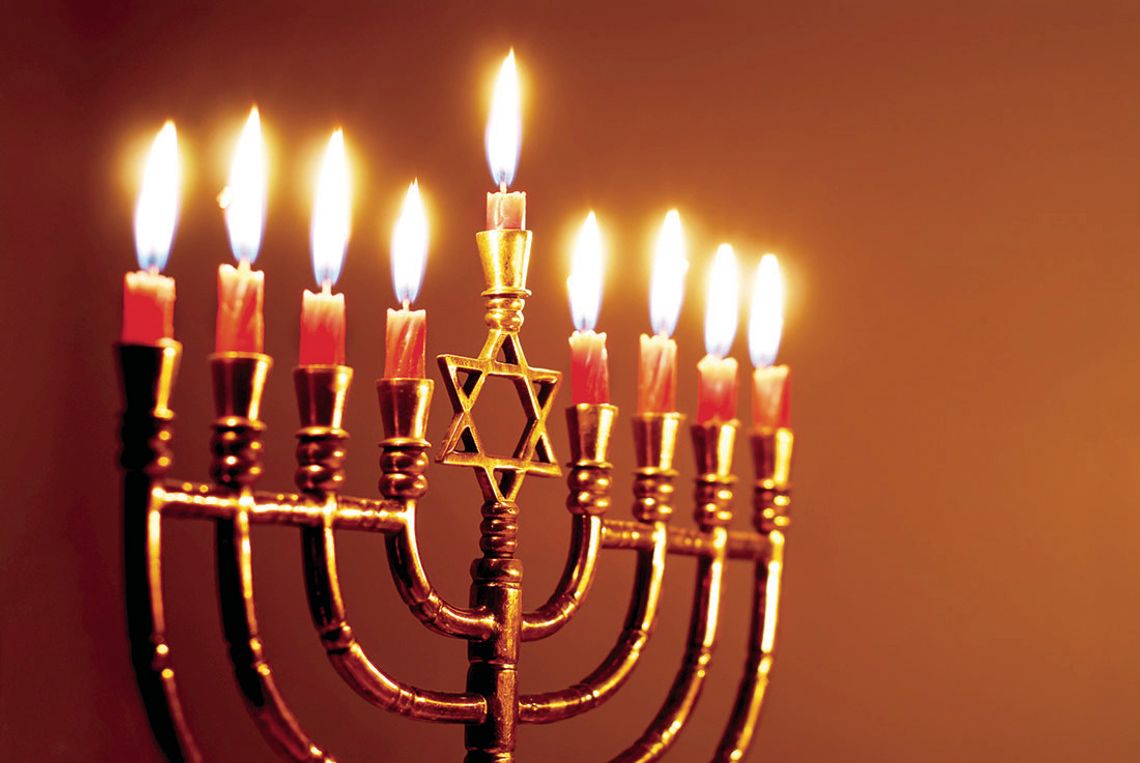DELIBERATELY DIVERSE | by Frances Sorrow
Deliberately Diverse represents the viewpoints of a group of Taylor residents who never entirely agree on anything but welcome the opportunity to share and appreciate our diverse opinions in our beloved community.
The short answer is no, but certain aspects of Hanukkah bring Christmas to mind. What are these aspects? Both occasionally occur around the same time, although Hanukkah, being on a lunar calendar, can begin from late November to late December. This year, it started at sundown on Wednesday, Dec. 25 (Christmas Day), and ends at sundown on Thursday, Jan. 2 Many Jewish families, especially those with children, give presents on most of the eight nights.
But Hanukkah more closely resembles Independence Day, though this is an ancient day of freedom, and not Israeli Independence Day, which started in 1948.
From movies, TV and friends, many know some customs.
For eight nights we light candles on a ninebranch candle holder, commonly called a menorah. Due to the legend of the single vial of holy oil that miraculously burned for the eight days needed to create new sacred oil, we eat foods fried in oil and we play a gambling game with a top called a dreidel. Stakes are nuts or raisins.
Then why Independence Day? Hanukkah is called the Festival of Dedication as well as the Festival of Lights.
What dedication? In 167 B.C.E., the Syrian-Greek King Antiochus Epiphanes (which means “glorious”; he wasn’t for us) ruled Judea. He allowed statues of pagan gods in the Holy Temple and pig sacrifices on the altar.
In 165 B.C.E., a Jewish priest named Mattathias killed a Jew who was sacrificing to a Greek god.
Mattathias rallied his five sons and other followers with the cry, “Let everyone who is zealous for the law, and supports the covenant, come out with me.”
At his death, leadership went to his son, Judah Maccabee.
After three years of fighting, Maccabee and his soldiers recaptured the Temple only to find everything polluted.
Cleaning began, but the altar for burnt offerings was too defiled for cleansing, so it had to be torn down.
The soldiers then constructed a new altar.
I envisioned an altar something like those in many churches. I was wrong.
Exodus 20:25 outlines the requirements: The altar was to be built of unworked stones, i.e. never touched with a tool. 1st Chronicles gives dimensions: height — 10 cubits and width — 32 cubits. This is about 16 feet by 50 feet.
The rebuilding was followed by cleaning or replacing the lamps, curtains, etc. The libertion of the country took another 22 years of fighting.
Why do we celebrate the holiday?
According to Maccabees 4:59, “Then Judah and his brothers and the entire assembly of Israel declared that the rededication of the altar should be celebrated with a festival or joy and gladness at the same time each year, beginning on the 25th of Kislev, and lasting for eight days.”
Happy holidays to all.
Sorrow is a long-time Taylor resident and amateur historian.
“
Let everyone who is zealous for the law, and supports the covenant, come out with me.”
— Mattathias





